
Geologisch-Paläontologische Abteilung
Burgring 7
1010 Wien
There is a blog for this project:
Fossilfinder
Due to the enormous request and the multitude of consignments of fossil images encompassing almost the entire Earth history, the precise issues and the resulting project target were adapted in accordance to the requirements and wishes oft he citizen scientists. The geographical and chronological distribution of fossils in Austria is a particular focal point in the scientific problem of this geoscience project. Exciting field research in the Austrian Alps forms the foundation of the resulting research. Effective explorations in Austria are continuously declining, but knowledge about fossils is always increasing. This gap can be closed with the combined energy of both young and old, from scientists to citizen scientists. Methods from biostratigraphy and taxonomy are used, as are the latest techniques in photographic documentation. The relative age of ammonites, molluscs and snails are identified, which then allows basic classification in taxonomic groups. These methods and goals then lead to more complete data on the distribution of various fossil groups in Austria. Scientists then benefit from knowing about sources for different fossil groups in new locations and citizen scientists benefit from precise identification by specialists.
Here you can also find the Young Science contact for interested schools and teachers.
This new project gives interested citizen scientists, who range from school pupils to amateur collectors and professional scientists, a basis for identifying new fossil findings, publishing these and thereby completing the network of data from the Earth history in Austria. The collaborators are thus collecting new data for research into the Earth history of the Alps in particular but also of Austria in general. This can be through photo documentation or by actively collecting Cretaceous fossils. Another very useful dimension to this project is the treasures kept in private collections belonging to many citizen scientists. These discoveries are entered into accessible data sets and inventory databases and should result in a comprehensive picture of deposits formed during the Earth history and its fossils in Austria. The data is evaluated, made available as a graphic online and shown on the Fossilfinder APP. The aim of this is to then create an interactive map showing the geographic distribution of these discoveries. The new project enables a correlation with other places of discovery from the same era and fossil associations in Europe.
The tasks within the project are supported individually. The project manager is, on the one hand, responsible for coordinating and creating data sets and processing the information into publications and databases that can be accessed and viewed by any interested party, whether scientists, collectors, amateur researchers or citizen scientists. The areas of responsibility for citizen scientists mean that the volunteers in the project are allocated a variety of tasks. These range from collecting finds and reporting them to the joint potential description to the final inventory and publication of the fauna and flora in Austria’s Earth history.
There will soon be a link to the data and the accompanying results on the project page on Österreich forscht. This will also provide a detailed description of where and how you can find and utilise the project data.
Those who are interested in taking part should contact Dr Alexander Lukeneder via e-mail (This email address is being protected from spambots. You need JavaScript enabled to view it.) or telephone (0043 1 52177 251).
Podcast episode
If you would like to learn more, you can listen to the Wissen macht Leute podcast episode about the project (in German).
Contribute fossil findings in the interactive map
App: SPOTTERON Citizen Science Plattform
Open interactive map in full screen
Image gallery
Click on an image to enlarge.
Citizen Scientists
-
 Citizen Scientist Vinzenz Loimayr, Vinzenz Loimayr Citizen Scientist Vinzenz Loimayr, Vinzenz Loimayr
Citizen Scientist Vinzenz Loimayr, Vinzenz Loimayr Citizen Scientist Vinzenz Loimayr, Vinzenz Loimayr -
 Citizen Scientist Alfred Leiblfinger, Dominik Kaluza Citizen Scientist Alfred Leiblfinger, Dominik Kaluza
Citizen Scientist Alfred Leiblfinger, Dominik Kaluza Citizen Scientist Alfred Leiblfinger, Dominik Kaluza -
 Citizen Scientist Andrea Beran, Andrea Beran Citizen Scientist Andrea Beran, Andrea Beran
Citizen Scientist Andrea Beran, Andrea Beran Citizen Scientist Andrea Beran, Andrea Beran -
 Citizen Scientist Andreas Bonanni, Alexander Lukeneder Citizen Scientist Andreas Bonanni, Alexander Lukeneder
Citizen Scientist Andreas Bonanni, Alexander Lukeneder Citizen Scientist Andreas Bonanni, Alexander Lukeneder -
 Citizen Scientist Anton Englert, Alexander Lukeneder Citizen Scientist Anton Englert, Alexander Lukeneder
Citizen Scientist Anton Englert, Alexander Lukeneder Citizen Scientist Anton Englert, Alexander Lukeneder -
 Citizen Scientist Bertold Lumplecker, Hubert Putz Citizen Scientist Bertold Lumplecker, Hubert Putz
Citizen Scientist Bertold Lumplecker, Hubert Putz Citizen Scientist Bertold Lumplecker, Hubert Putz -

-
 Citizen Scientist Eva Hasenzagel, Eva Hasenzagel Citizen Scientist Eva Hasenzagel, Eva Hasenzagel
Citizen Scientist Eva Hasenzagel, Eva Hasenzagel Citizen Scientist Eva Hasenzagel, Eva Hasenzagel -
 Citizen Scientist Ferdinand Estermann, Florian Hummer Citizen Scientist Ferdinand Estermann, Florian Hummer
Citizen Scientist Ferdinand Estermann, Florian Hummer Citizen Scientist Ferdinand Estermann, Florian Hummer -
 Citizen Scientist Franz Mayer, Liane Mayer Citizen Scientist Franz Mayer, Liane Mayer
Citizen Scientist Franz Mayer, Liane Mayer Citizen Scientist Franz Mayer, Liane Mayer -
 Citizen Scientist Franz Topka, Alexander Lukeneder Citizen Scientist Franz Topka, Alexander Lukeneder
Citizen Scientist Franz Topka, Alexander Lukeneder Citizen Scientist Franz Topka, Alexander Lukeneder -
 Citizen Scientist Gerhard Wanzenböck, Werner Kerndler Citizen Scientist Gerhard Wanzenböck, Werner Kerndler
Citizen Scientist Gerhard Wanzenböck, Werner Kerndler Citizen Scientist Gerhard Wanzenböck, Werner Kerndler -

-
 Citizen Scientist Horst Kühschelm, Horst Kühschelm Citizen Scientist Horst Kühschelm, Horst Kühschelm
Citizen Scientist Horst Kühschelm, Horst Kühschelm Citizen Scientist Horst Kühschelm, Horst Kühschelm -
 Citizen Scientist Justine Uprimny, Alexander Lukeneder Citizen Scientist Justine Uprimny, Alexander Lukeneder
Citizen Scientist Justine Uprimny, Alexander Lukeneder Citizen Scientist Justine Uprimny, Alexander Lukeneder -

-
 Citizen Scientist Martin Maslo, Alexander Lukeneder Citizen Scientist Martin Maslo, Alexander Lukeneder
Citizen Scientist Martin Maslo, Alexander Lukeneder Citizen Scientist Martin Maslo, Alexander Lukeneder -
 Citizen Scientist Oliver Schmitsberger, Martin Penz Citizen Scientist Oliver Schmitsberger, Martin Penz
Citizen Scientist Oliver Schmitsberger, Martin Penz Citizen Scientist Oliver Schmitsberger, Martin Penz -
 Citizen Scientist Peter Skoumal, Marlene Skoumal Citizen Scientist Peter Skoumal, Marlene Skoumal
Citizen Scientist Peter Skoumal, Marlene Skoumal Citizen Scientist Peter Skoumal, Marlene Skoumal -
 Citizen Scientist Petra Lukeneder, Alexander Lukeneder Citizen Scientist Petra Lukeneder, Alexander Lukeneder
Citizen Scientist Petra Lukeneder, Alexander Lukeneder Citizen Scientist Petra Lukeneder, Alexander Lukeneder -
 Citizen Scientist Reinhard Polak, Reinhard Polak Citizen Scientist Reinhard Polak, Reinhard Polak
Citizen Scientist Reinhard Polak, Reinhard Polak Citizen Scientist Reinhard Polak, Reinhard Polak -

-
 Citizen Scientist Umberto Uprimny, Alexander Lukeneder Citizen Scientist Umberto Uprimny, Alexander Lukeneder
Citizen Scientist Umberto Uprimny, Alexander Lukeneder Citizen Scientist Umberto Uprimny, Alexander Lukeneder -
 Citizen Scientist Wolfgang Maherndl, Johanna Maherndl Citizen Scientist Wolfgang Maherndl, Johanna Maherndl
Citizen Scientist Wolfgang Maherndl, Johanna Maherndl Citizen Scientist Wolfgang Maherndl, Johanna Maherndl -

-
 Citizen Scientists Karl Bösendorfer, Alexander Lukeneder Citizen Scientists Karl Bösendorfer, Alexander Lukeneder
Citizen Scientists Karl Bösendorfer, Alexander Lukeneder Citizen Scientists Karl Bösendorfer, Alexander Lukeneder -
 Citizen Scientist Harald Spitznagel, Claudia Spitznagel Citizen Scientist Harald Spitznagel, Claudia Spitznagel
Citizen Scientist Harald Spitznagel, Claudia Spitznagel Citizen Scientist Harald Spitznagel, Claudia Spitznagel -
 Tristan Tuncay Riedl Tristan Tuncay Riedl
Tristan Tuncay Riedl Tristan Tuncay Riedl -
 Young Scientist Lisa Marie Lukeneder, Alexander Lukeneder Young Scientist Lisa Marie Lukeneder, Alexander Lukeneder
Young Scientist Lisa Marie Lukeneder, Alexander Lukeneder Young Scientist Lisa Marie Lukeneder, Alexander Lukeneder -
 Lisa Petracs Lisa Petracs
Lisa Petracs Lisa Petracs
https://citizen-science.at./en/projects/fossilfinder-539#sigProId8f431b06ad
Fossils
https://citizen-science.at./en/projects/fossilfinder-539#sigProIdd216b2b21f
Publications with participation of citizen scientist
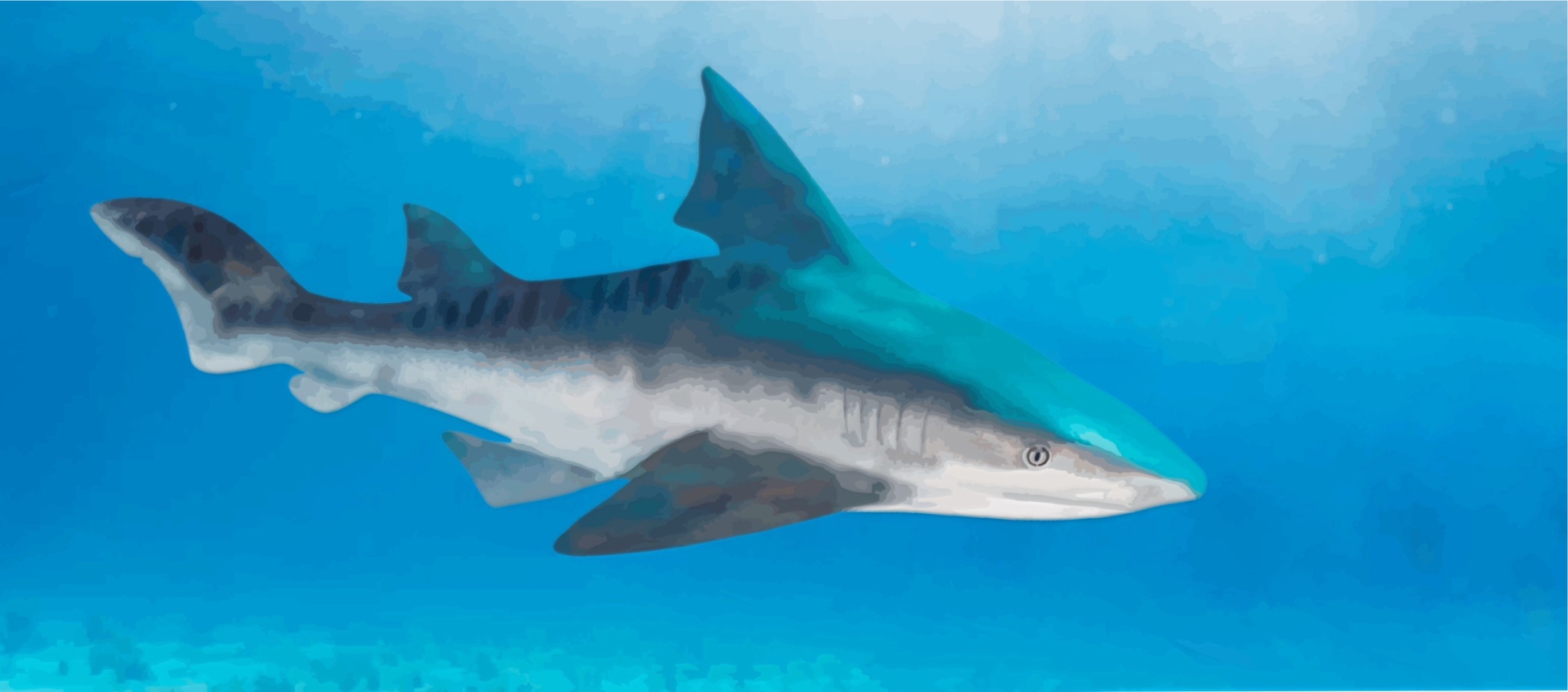
Lukeneder, A., Surmik, D., Gorzelak, P. et al. Bromalites from the Upper Triassic Polzberg section (Austria); insights into trophic interactions and food chains of the Polzberg palaeobiota. Scientific Reports 10, 20545 (2020)
Involved citizen scientists: Birgitt Aschauer and Karl Aschauer
Type of participation: collecting fossils, donating specimens to science
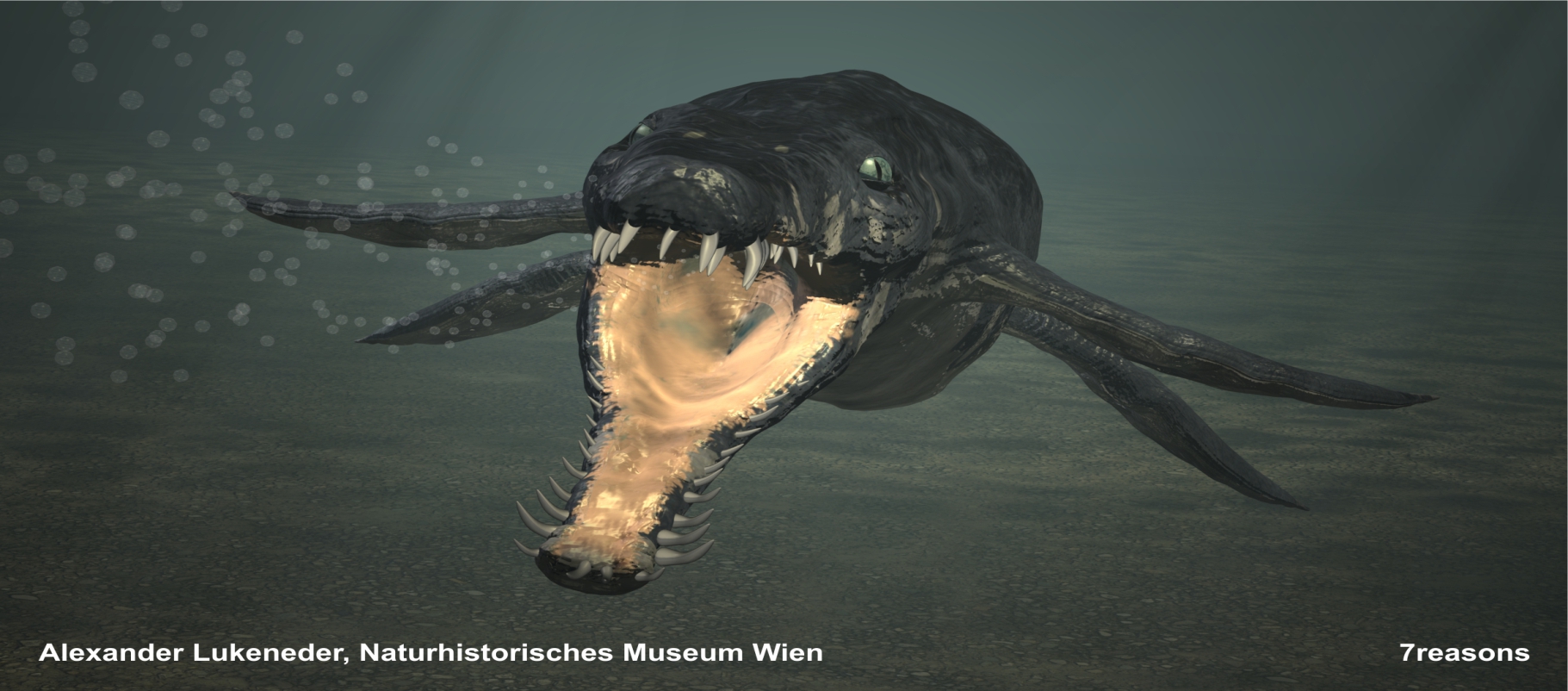
Lukeneder, A., Zverkov, N. 2020. First evidence of a conical-toothed pliosaurid (Reptilia, Sauropterygia) in the Hauterivian of the Northern Calcareous Alps, Austria. Cretaceous Research 106, February 2020, 104248
Involved citizen scientists: Karl Bösendorfer
Type of participation: reporting the locality, collecting fossils
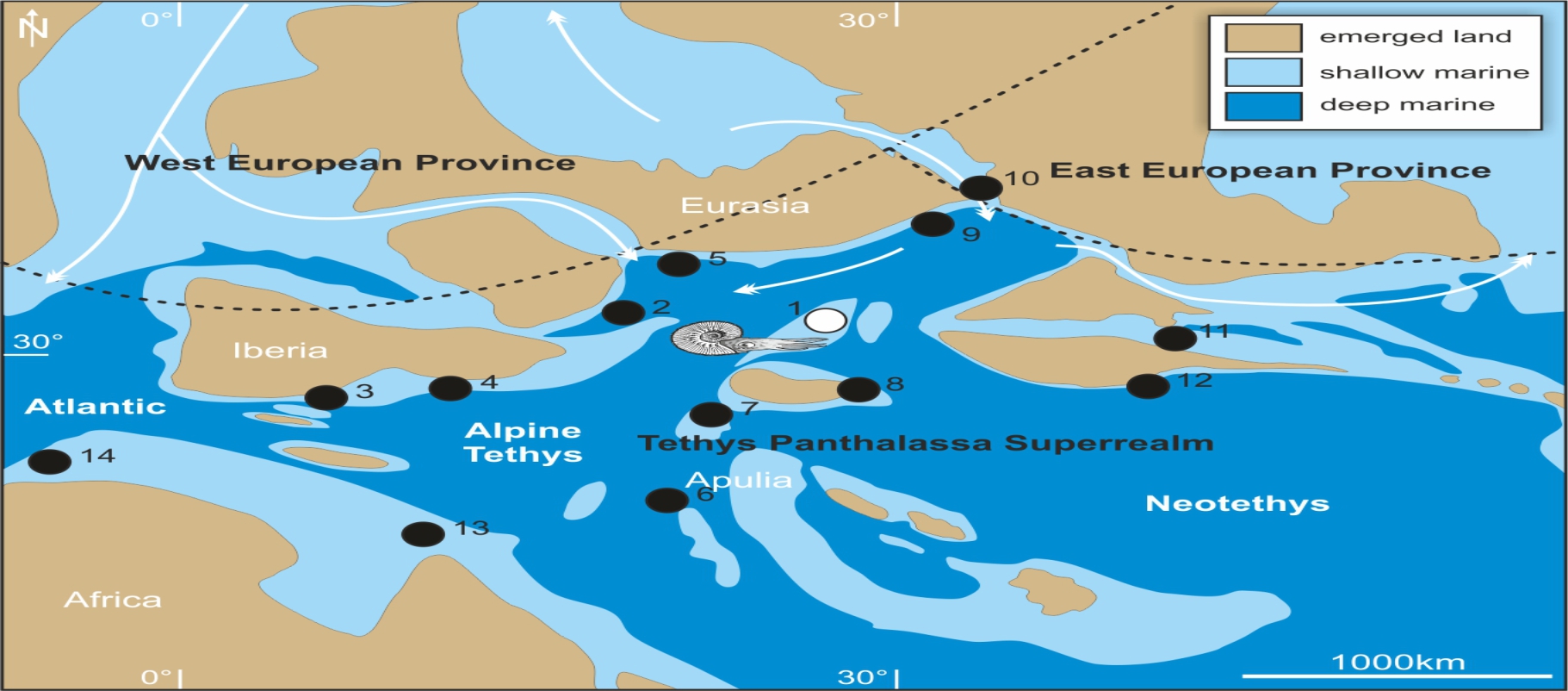
Lukeneder, A. 2018. A new ammonoid fauna from the Northern Calcareous Alps (upper Hauterivian–lower Barremian, Austria). Cretaceous Research, 88, 158-172.
Involved citizen scientists: Karl Bösendorfer
Type of participation: collecting fossils, donating specimens to science
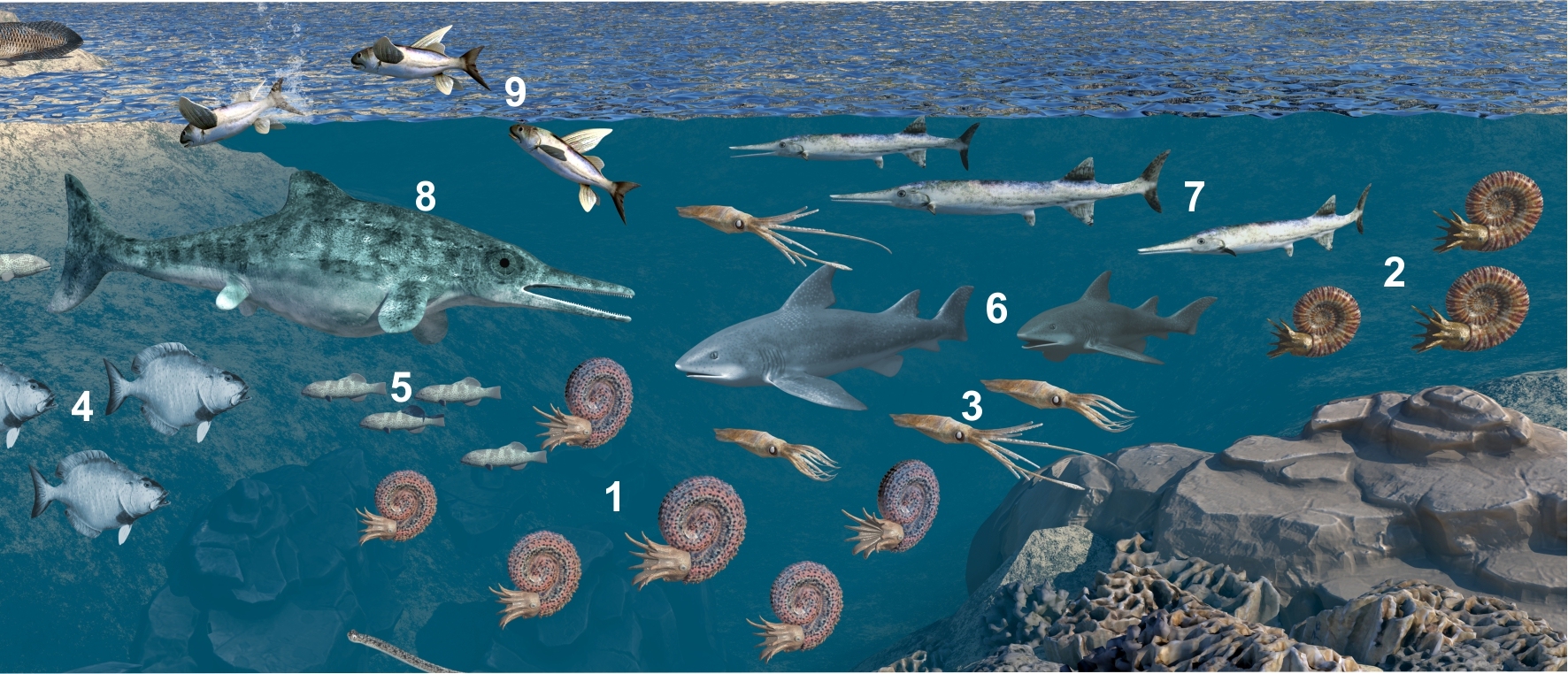
Picture: (c) Alexander Lukeneder
Lukeneder, A., Lukeneder, P. 2022. Taphonomic history and trophic interactions of an ammonoid fauna from the Upper Triassic Polzberg palaeobiota. Scientific Reports, 12, 7455.
Involved citizen scientists: Birgitt and Karl Aschauer
Type of participation: donating specimens to science
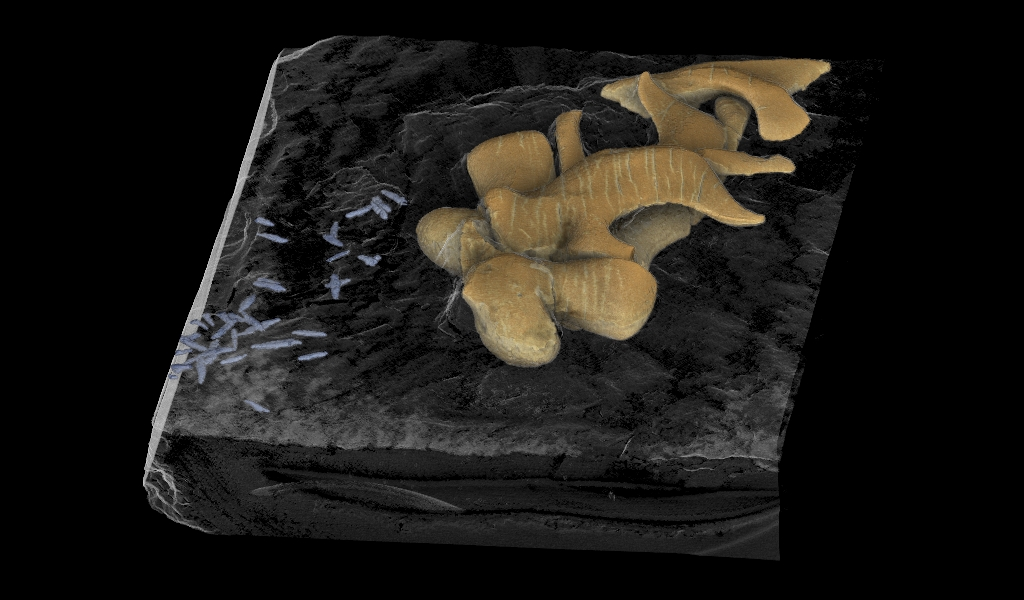
Picture: (c) Alexander and Petra Lukeneder
Lukeneder, P., Lukeneder A. 2022. Mineralized coleoid cranial cartilage from the Late Triassic Polzberg Konservat-Lagerstätte (Austria)". PLOS ONE, 17(4): e0264595.
Involved citizen scienctist: Birgitt and Karl Aschauer
Types of participation: donating specimens to science
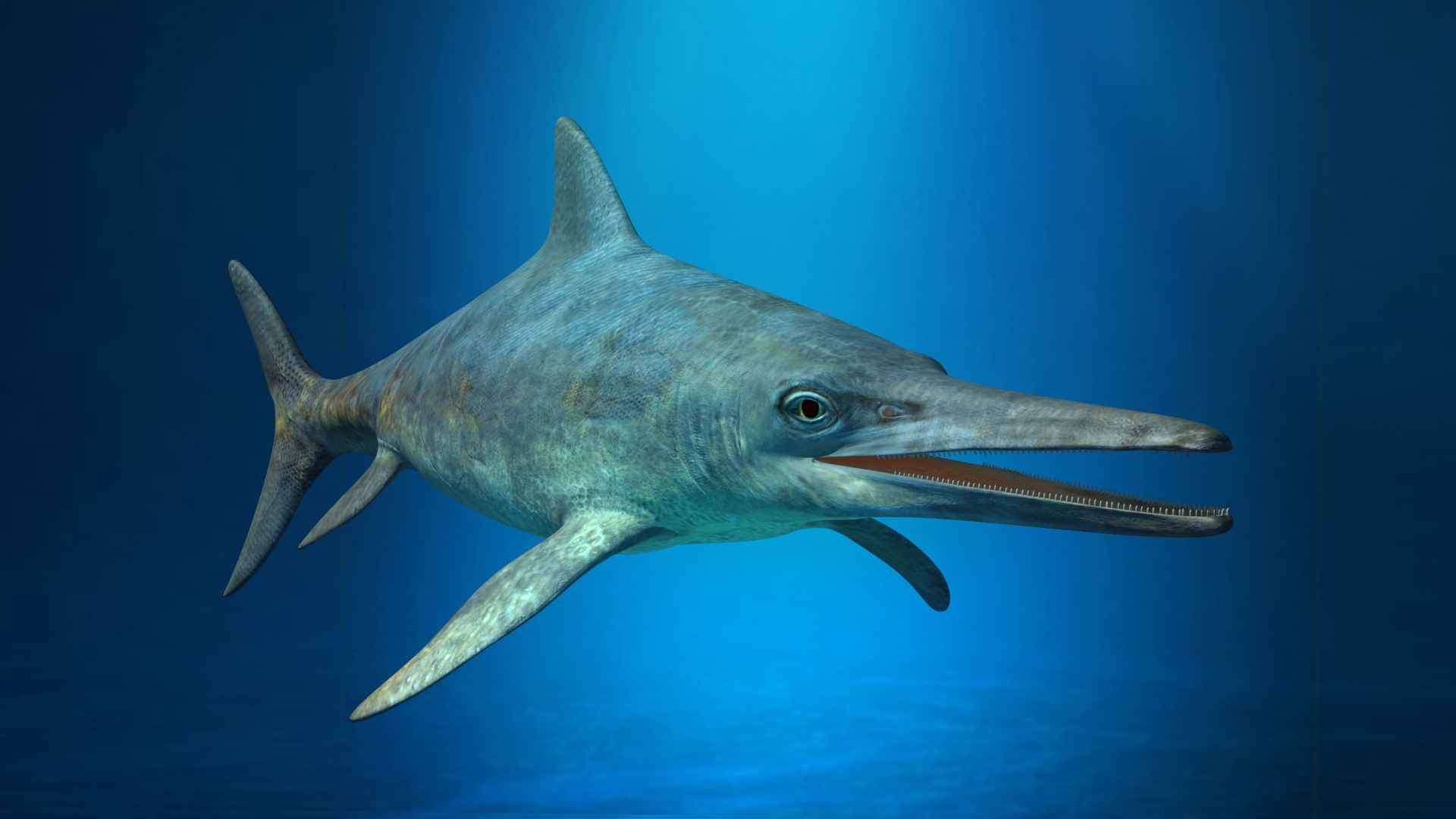
Picture: (c) Alexander Lukender, 7reasons
Lukeneder, A., Zverkov, N., Kaurin, C., Blüml, V. 2022. First Early Cretaceous ichthyosaurs of Austria and the problem of Jurassic–Cretaceous ichthyosaurian faunal turnover. Cretaceous Research, 136, 2022, 105224.
Involved citizen scientists: Karl Bösendorfer, Alfred Leiflfinger
Type of participation: collecting fossils, donating specimens to science

Picture: (c) Lukeneder, NHMW
Lukeneder, A., Lukeneder P. 2021. The Upper Triassic Polzberg palaeobiota from a marine Konservat-Lagerstätte deposited during the Carnian Pluvial Episode in Austria. Nature Research, Scientific Reports, 11, 16644 (2021).
Involved citizen scientists: Birgitt and Karl Aschauer
Types of participation: donating specimens to science
Interesting links
In the following you will find interesting internet links with Cretaceous period reference. On these pages citizen scientists can read the latest publications about fossils, environment or climate variations of the Cretaceous period. In addition, internationally and globally valid classifications and zonings of the Cretaceous can be viewed. Important data and facts for route planning and the localization of find points can be planned and retrieved in digital systems. Tectonic units and rock formations can be explored on geological maps.
All these data are freely accessible on the assigned links.
https://www.journals.elsevier.com/cretaceous-research
https://www.journals.elsevier.com/palaeogeography-palaeoclimatology-palaeoecology
http://www.austrianmap.at/amap/
https://www.kompass.de/wanderkarte/
https://www.geologie.ac.at/onlineshop/karten
https://fossils-of-austria.at/
Media
Citizen Science Seminar
In 2022, poject coordinator Alexander Lukeneder held a lecture about Fossilfinder as part of the lecture series "Citizen Science Seminar" at the University of Natural Resources and Life Sciences Vienna (BOKU): "Fossilfinder - to report or not to report, that is the question" (in German). Here, you can watch the video recording of the lecture on our YouTube-channel:
Pliosaurs in the Cretaceous Sea of Austria (in German)
Research in the Dolomites (in German)
Animation of the heteromorphours Cretaceous ammonite Dissimilites
Ammonite mass occurrences in Turkey
Science Talk - Mass extinction, swamp forests and flying fish of Lunz
First ichthyosaur record from the Cretaceous period in Austria
This project fulfils version 1.1 of the quality criteria for citizen science projects on Österreich forscht.
- geology

